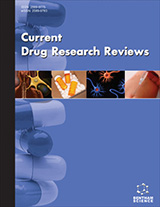Abstract
Background: Mucormycosis has been infesting the universe for a while back, often with no prompt treatments. The disease devastation is spreading at an alarming rate. Many researchers are still hoping for a good potential drug that could help the healthcare system in this tussle. Molecular docking is an in silico tool that has gained popularity over the last few decades. Knowing the mechanism of enzymatic action is aided by imitating membrane protein actions in binding ligands.
Aim: The aim of this perspective is to determine whether an existing drug, daclatasvir, has antifungal activity.
Objective: The primary objective of this in silico study was to investigate the potential effects of the binding affinity of daclatasvir with the crucial protein (1XFF) of mucormycosis, as well as the binding pattern of the active site amino acids with the drug molecule.
Materials and Methods: To calculate the binding affinity of daclatasvir to the fungal protein 1XFF, Auto Dock Vina was used for molecular docking studies. The CDOCKER protocol was used to determine the receptor-ligand interaction by configuring various parameters.
Results: The docking energy of the ligand (daclatasvir) on the protein (1XFF) was found to be - 16.7216 kcal/mol, while the interaction energy was found to be -42.1314 kcal/mol.
Conclusion: The binding pattern completely alters the dynamics of the protein, resulting in the breakdown of the fungal wall. The vital protein (1XFF) of Rhizopus oryzae is proposed as a possible protein target for the non-structural protein 5A inhibitor/antiviral drug daclatasvir in this study.
[http://dx.doi.org/10.1128/CMR.13.2.236] [PMID: 10756000]
[http://dx.doi.org/10.1128/CMR.18.3.556-569.2005] [PMID: 16020690]
[http://dx.doi.org/10.1086/432579] [PMID: 16080086]
[http://dx.doi.org/10.1080/10428190310001653691] [PMID: 15359632]
[http://dx.doi.org/10.4103/ijo.IJO_843_20] [PMID: 32317432]
[http://dx.doi.org/10.1016/j.dsx.2020.09.022]
[http://dx.doi.org/10.1128/mBio.01087-20] [PMID: 32487760]
[http://dx.doi.org/10.1016/j.tmaid.2021.102148] [PMID: 34454090]
[http://dx.doi.org/10.1016/j.idc.2015.10.011] [PMID: 26897065]
[http://dx.doi.org/10.1016/j.idc.2021.03.009]
[http://dx.doi.org/10.1039/D0NJ00657B]
[http://dx.doi.org/10.1021/jm401836p] [PMID: 24521299]
[http://dx.doi.org/10.3390/jof5010026] [PMID: 30901907]
[http://dx.doi.org/10.1016/j.jinf.2009.06.002] [PMID: 19576639]
[http://dx.doi.org/10.1016/j.dsx.2021.102196] [PMID: 34246939]
[http://dx.doi.org/10.1186/s12879-021-06647-x] [PMID: 34496787]
[http://dx.doi.org/10.1007/s12033-021-00358-z] [PMID: 34159564]
[http://dx.doi.org/10.1177/03000605211043413] [PMID: 34494475]



























